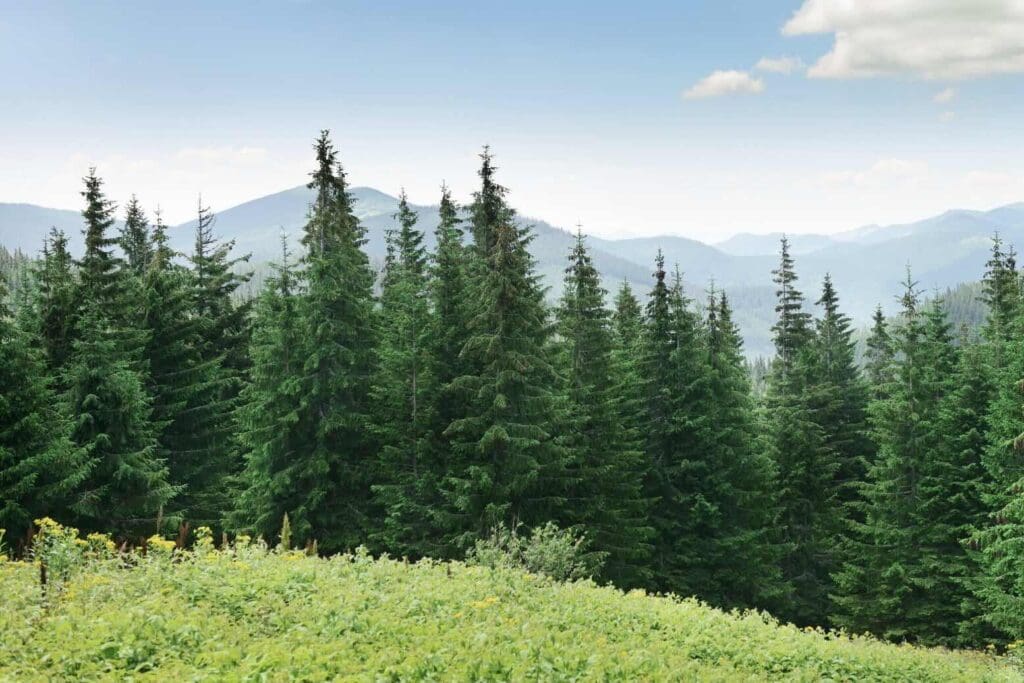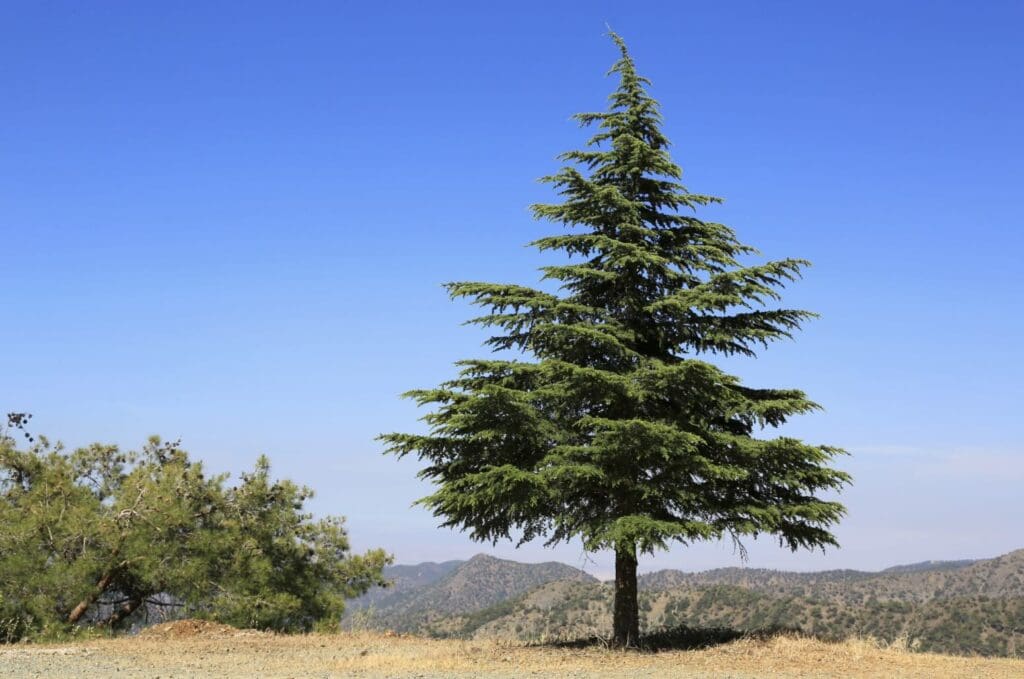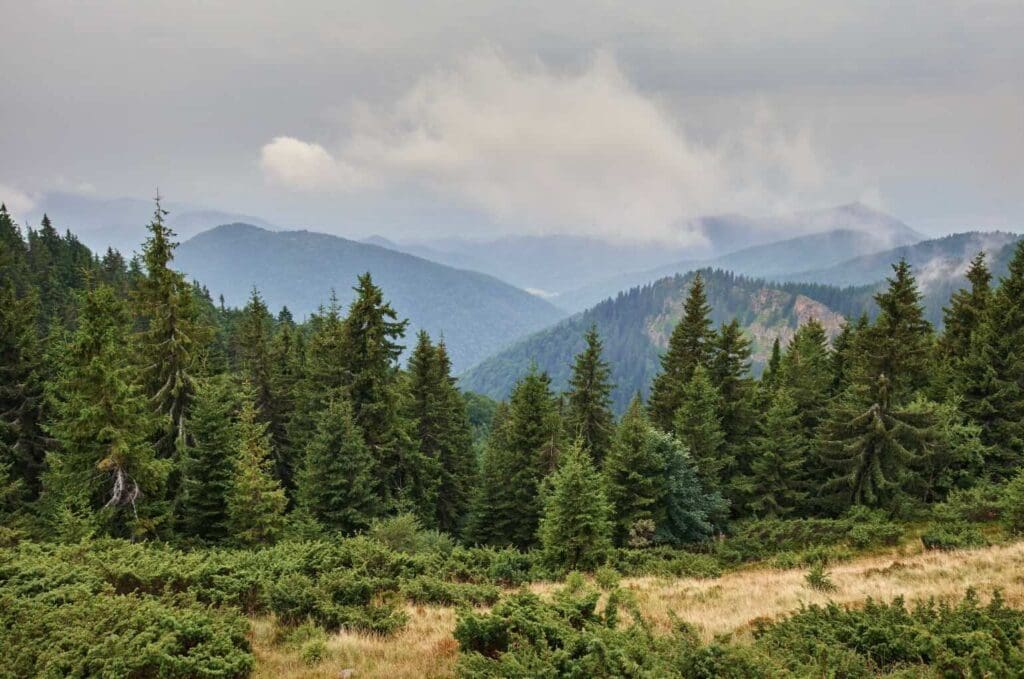Pine trees and soaring forest pillars testify to nature’s exquisite architecture and formidable resilience. With an ancestry stretching back to the Mesozoic era, these conifers have carved their niche into nearly every terrestrial habitat, flaunting their rich biodiversity with over a hundred distinct species.
In this exploration, we’ll delve into the vast world of the genus Pinus, unraveling the intricacies that define their existence and unveiling the substantial imprint they leave on our planet. As sentinels of our ecosystems, pine trees hold more than just branches and needles; they embody a legacy of biological sophistication and environmental stewardship.
Table of Contents
- Taxonomy and Biological Characteristics of Pine Trees
- Environmental Impacts and Benefits of Pine Trees
- Cultivation Practices and Silviculture of Pine Trees
- Conservation and Threats to Pine Species
- Related Content
Taxonomy and Biological Characteristics of Pine Trees
Exploring the Pine: A Journey into Genus Pinus
The study of plant taxonomy is both an exacting science and an ongoing narrative of the natural world’s diversity. The genus Pinus is a paragon of ecological success and botanical intrigue within this realm. Commonly referred to as pines, these conifers are pivotal to the ecosystems they inhabit and the scientific community that studies them.
Defining Characteristics of Pinus
The genus Pinus is distinctive within the plant kingdom. A hallmark feature of pines is their needle-like leaves, housed in clusters known as fascicles. Depending on the species, these bundles may consist of anywhere from one to eight needles, each serving as an adaptation to reduce water loss in often challenging climates.
Equally significant are the cones—an evolutionary innovation among conifers. Pine cones exist in pairs, with a male producing pollen and a female developing seeds. The wind plays a vital role in their reproduction, serving as the primary pollinator for these statuesque plants. The seeds of pines are occasionally winged, aiding in their dispersal by air currents, a strategic feature that facilitates colonization over considerable distances.
Biology and Habitat
The bark of Pinus species is variable but often thick and scaly, an adaptation that offers protection against fire and insect predators. Moreover, pines have developed a symbiotic relationship with mycorrhizal fungi. This underground partnership allows them to thrive in impoverished soils, where nutrients are scarce, and competition is rigorous.
Pines are predominantly native to the Northern Hemisphere, extending from the Arctic regions of Siberia to the tropical climates of Central America. Their habitats are as diverse as the species themselves—from the dry, fire-prone landscapes where the Jack pine (Pinus banksiana) prevails to the moist, high-altitude regions favored by the Sugar pine (Pinus lambertiana).
Ecological Significance
The ecological role of pines cannot be understated. They are keystone species in many biomes, contributing to erosion control and microclimate regulation and acting as primary producers in their food webs. Furthermore, several species have been integral to human industry, providing timber, resin, and other by-products critical to various economic sectors.
Conservation and Challenges
As diverse and adaptable as the genus Pinus is, it faces several threats. Climate change, habitat destruction, and diseases such as pine wilt challenge their survival. The scientific community works assiduously to monitor, preserve, and restore pine populations around the globe. It is a responsibility deeply felt by those who admire these bastions of the botanical world.
The genus Pinus, with its rich tapestry of species, is a testament to plant life’s intricacies and wonders. Its members, the pines, serve as architectural pillars in the forested domains, as the subject of vigorous scientific study, and as sources for countless human uses. They are, in essence, a symbol of the intricate balance between resilience and vulnerability that defines all life on Earth.

Environmental Impacts and Benefits of Pine Trees
Pine trees, members of the Pinus genus, are pivotal in promoting biodiversity.
These perennial conifers support a broad array of wildlife, providing food and habitat to numerous species.
Pine seeds are a vital food source for forest animals such as birds, squirrels, and various rodents, contributing to a dynamic and interconnected food web.
By producing a bounty of seeds at intermittent intervals—a phenomenon known as masting—pine trees can ensure that populations of seed predators do not become excessively large, maintaining a balanced ecosystem.
The architectural structure of pine trees also fosters biodiversity.
With their characteristic towering heights and layered canopies, pines create many niches for diverse organisms to thrive.
Different layers offer unique microhabitats, from the bark and needle-covered forest floor to the high branches.
Woodpeckers, for example, find respite and nesting cavities in mature pines, while understory plants adapted to the dappled light beneath the canopy flourish.
In addition to supporting fauna and flora, pine trees play a crucial role in carbon sequestration, a natural process by which atmospheric carbon dioxide is captured by trees and stored as carbon in biomass and soil, contributing to climate change mitigation.
Pine forests, particularly in boreal and temperate regions, are substantial carbon sinks due to their high density and extensive root systems.
As trees grow, they continuously absorb carbon dioxide, effectively reducing the concentration of greenhouse gases in the atmosphere.
Furthermore, pine trees potently impact soil properties and nutrient cycles.
The fallen needles of pines create a thick layer of organic matter as they decompose, enhancing the soil’s ability to retain moisture and providing a slow release of nutrients.
This needle layer, known as litter, can alter the soil’s acidity, impacting the types of plants that can grow in pine-dominated ecosystems.
These conditions support specialized understory vegetation that can thrive in acidic, nutrient-poor soils often found in pine forest settings.
Finally, research into pine tree ecosystems advances our understanding of forest fires and their ecological impact.
Pine species have evolved with fire, developing traits such as thick bark for protection and serotinous cones that release seeds in response to the heat of a blaze.
Fire, therefore, plays a natural role in the life cycle of pine forests by clearing decaying matter, reducing competition, and facilitating regeneration.
Understanding the adaptive responses of pines to fire is vital for developing effective forest management and fire mitigation strategies.
Collectively, these facets illustrate that pine trees are not solitary entities but integral components of a larger ecological tapestry.
They shape and are shaped by their environment, reinforcing the fundamental principle that preserving pines is inextricably linked to biodiversity conservation and the functionality of forest ecosystems.

Cultivation Practices and Silviculture of Pine Trees
Best Practices for Cultivating Healthy Pine Trees
The robust vitality of pine trees, or the genus Pinus, necessitates a confluence of appropriate measures to maintain their health and vitality. Understanding the minutiae of their growth requirements and environmental interactions lies at the foundation of horticultural excellence for these conifers.
Pivotal to their cultivation is a multifaceted approach encompassing soil management, proper irrigation techniques, pest and disease control, and strategic planting.
Soil considerations for pine trees are paramount. The ideal soil for these conifers should be well-draining, with a slight acidity that resonates with the natural soils of their environments. Regular assessment of soil pH and nutrient levels is indispensable for preempting any deficiencies or imbalances that might compromise conifer health.
Mulching around the base of pine trees is instrumental in retaining moisture and modulating temperature and in suppressing competitive weeds that can siphon essential resources.
Watering strategies for pines must echo the natural precipitation patterns of their indigenous habitats. Recognizing that many species are adapted to withstand periods of limited water availability is critical. An overabundance of moisture, particularly in non-native settings, can precipitate root rot and other water-related diseases.
Pines often thrive with a deep watering schedule that mimics natural rainfall, encouraging robust root systems that seek subsurface moisture during drier periods.
Pest management in pine cultivation requires vigilance and a proactive stance. Regular monitoring for signs of infestation is crucial. This includes noting changes in needle coloration, premature needle drop, or resin flow indicative of bark beetle activity. Prompt identification and targeted intervention can be instrumental in averting the spread of harmful agents and ensuring the sustained health of pine populations.
Disease prevention in pine trees involves a comprehensive approach that includes selecting disease-resistant species or cultivars when feasible. Proper spacing between trees to facilitate air circulation reduces the potential for fungal pathogens to take hold. Pruning should be judicious, with seasonal timing, to avoid exposing fresh wounds when pathogens are most active.
Strategic planting is an often-overlooked facet of pine tree cultivation. Understanding the mature size and growth habits of a given pine species allows for the correct positioning in the landscape to minimize future stress due to overcrowding or competition.
Furthermore, acknowledging the importance of sun exposure to the photosynthetic machinery of pine trees can result in well-positioned individuals who receive sufficient light throughout the day, which is conducive to optimal growth and health.
In conclusion, a regimen founded on attention to soil composition, carefully curated watering practices, constant vigilance against pests, effective disease management strategies, and strategic placement forms the cornerstone of cultivating healthy pine trees.
Adopting these best practices is a testament to the commitment and appreciation of these ubiquitous forest community members, ensuring their presence for future generations to admire and enjoy.

Conservation and Threats to Pine Species
In the preceding discussion on Pinus, the genus of pine trees, we identified their defining characteristics and vital ecological roles. However, myriad threats persist to their populations, some of which are intrinsic, such as pests and diseases, and others stem from anthropogenic causes. To protect these invaluable components of forest ecosystems, this analysis shall turn to the proactive measures we can take to ensure their survival and proliferation.
Soil Considerations for Pine Trees
The vitality of pine trees is inextricably linked to the soil conditions in which they grow. Well-draining soils are essential for preventing root rot and other water-related diseases. Soil pH is another critical factor, with many pines favoring slightly acidic conditions. Ensuring appropriate nutrient levels and employing organic mulch can enhance the soil’s quality. Mulching also aids in retaining soil moisture and suppressing weed growth.
Watering Strategies for Pines
Maintaining an optimal moisture balance is quintessential for pine tree health. When watering, it is often beneficial to emulate natural rainfall patterns. Overwatering should be avoided, as pines generally thrive in conditions where their roots are not constantly saturated. Too much moisture can promote fungal growth and weaken the tree’s natural defenses.
Pest Management in Pine Cultivation
Pine trees suffer from various pest infestations, such as bark beetles and weevils. Regular monitoring of pine stands can facilitate early detection of pests, which is crucial in managing outbreaks. Identifying signs of infestation, including boreholes, sawdust-like frass, or patches of dead needles, can enable targeted treatments, thus reducing widespread damage.
Disease Prevention in Pine Trees
Pines are susceptible to diseases like blister rust and pitch canker. To prevent disease spread, selecting resistant species and cultivars is advisable. Planting trees at appropriate spacing allows for adequate air circulation that can discourage the growth of pathogens. Regular pruning of diseased or dead branches can further hinder disease progression and improve the tree’s overall health.
Strategic Planting for Pine Trees
A strategic approach to planting pine trees can substantially impact their survival and growth. Understanding a pine’s specific growth habits, potential size at maturity, and sunlight needs is necessary for optimal placement in the landscape. These factors ensure that pines have sufficient space to grow without undue resource competition.
Embracing Best Practices
Adopting these aforementioned best practices is paramount in cultivating healthy pine populations. It is not solely an investment in the trees but the broader ecosystems they support. Optimal soil conditions, proper watering, diligent pest management, disease prevention, and strategic planting are all facets that, when harmoniously applied, promote robust pine tree growth and development.
Through concerted efforts, we can mitigate the threats to pine populations and foster their continued role as a foundation of forest ecosystems and a pivotal contributor to our planet’s biodiversity.

Delving into the realm of pine trees has unraveled a complex tapestry of ecological significance and human dependence. These coniferous giants stand not merely as silent witnesses to time but as dynamic participants in the ongoing life narrative on Earth.
As the sun sets on our exploration, let us renew our appreciation for the pine tree’s role in our world and the sobering responsibility to safeguard their future. Through collective efforts in conservation, mindful cultivation, and informed public engagement, we can ensure that pine trees continue to thrive, sustaining their ecological legacies and enriching the lives of countless species, including ours.
If you are interested in seeing how Mondoro can be a valuable partner for you for wood furniture products – we would love to talk to you to see how we can help you.
Find out more about how Mondoro can help you create, develop, and manufacture excellent home decor and furniture products – don’t hesitate to contact me, Anita. Check out my email by clicking here or become a part of our community and join our newsletter by clicking here.
Mondoro gives out a FREE Lookbook to anyone interested. You can receive a copy of our latest Lookbook by clicking here.
Listen to our Podcast called Global Trade Gal. You can find it on all major podcast platforms. Try out listening to one of our podcasts by clicking here.
Subscribe to our Mondoro Company Limited YouTube Channel with great videos and information by clicking here.
Related Content
Uncover the Beauty of Hawaii Pine Trees
The majestic Hawaii Pine trees not only characterize the lush green landscapes of the Hawaiian islands but are also deeply intertwined with the islands’ rich history, culture, economy, and environment. This article sets out to explore the remarkable journey of these stunning trees.
You can learn more by reading our blog, Uncover the Beauty of Hawaii Pine Trees by clicking here.
The Ecology of Jack Pine Trees
Stretching across the vast landscapes of North America, the Jack Pine (Pinus banksiana) stands as a testament to the resilience of boreal forests. These coniferous trees, characterized by their distinct, twisted cones and hardy nature, have carved a niche in the often harsh and fire-scarred terrains they call home. Beyond mere survival, the Jack Pine plays a pivotal role in its ecosystem, thriving in conditions that would stifle less adaptable species.
You can read our blog on The Ecology of Jack Pine Trees by clicking here.
Unveiling the Mysteries of the California Pine Tree
Standing as majestic sentinels of nature, California Pine trees are more than just towering behemoths of wood and leaves. They are vibrant ecosystems that support many other lives, are critical contributors to the environment’s health, and are rich with cultural, economic, and symbolic significance.
You can learn more by reading our blog, Unveiling the Mysteries of the California Pine Tree by clicking here.

